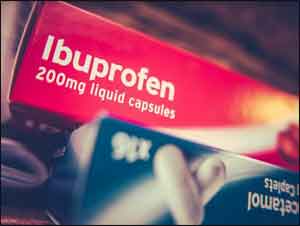- Home
- Editorial
- News
- Practice Guidelines
- Anesthesiology Guidelines
- Cancer Guidelines
- Cardiac Sciences Guidelines
- Critical Care Guidelines
- Dentistry Guidelines
- Dermatology Guidelines
- Diabetes and Endo Guidelines
- Diagnostics Guidelines
- ENT Guidelines
- Featured Practice Guidelines
- Gastroenterology Guidelines
- Geriatrics Guidelines
- Medicine Guidelines
- Nephrology Guidelines
- Neurosciences Guidelines
- Obs and Gynae Guidelines
- Ophthalmology Guidelines
- Orthopaedics Guidelines
- Paediatrics Guidelines
- Psychiatry Guidelines
- Pulmonology Guidelines
- Radiology Guidelines
- Surgery Guidelines
- Urology Guidelines
Acetaminophen plus Ibuprofen as effective as Low-Dose Oral Opioids in Acute Extremity Pain

For adults coming to the emergency department for arm or leg pain due to sprain, strain, or fracture, there was no difference in pain reduction after 2 hours with ibuprofen-acetaminophen vs three comparison opioid-acetaminophen (paracetamol) combinations, report Andrew K. Chang, M.D., M.S., of Albany Medical College, Albany, New York, and co-authors.
The United States is facing an opioid epidemic with almost 500,000 individuals dying from opioid overdoses since 2000. Despite the epidemic, opioid analgesics remain a first-line treatment for moderate to severe acute pain in the emergency department. The combination of ibuprofen and acetaminophen may represent an effective non-opioid alternative.
Four regimens were found equivalent in this randomized, controlled trial, but chosen doses were atypical.This study included 416 patients (ages 21 to 64 years) with moderate to severe acute extremity pain in two urban emergency departments were randomly assigned to receive:
- 400 mg ibuprofen and 1,000 mg acetaminophen
- 5 mg oxycodone and 325 mg acetaminophen
- 5 mg hydrocodone and 300 mg acetaminophen; or
- 30 mg codeine and 300 mg acetaminophen
The study measured the between-group difference in decline in pain two hours after taking the study drugs.
This was a randomized clinical trial (RCT). Randomized trials allow for the strongest inferences to be made about the true effect of an intervention such as a medication or a procedure. However, not all RCT results can be replicated because patient characteristics or other variables in real-world settings may differ from those that were studied in the RCT.
After 2 hours pain was less in all participants, without any important difference in effect between the four groups.
Stating the study's limitations, the researchers report that results apply only to pain after two hours. About 1 in 5 patients required additional medication to control their pain.
In conclusion, there were no important differences in pain reduction after 2 hours with ibuprofen-acetaminophen or opioid-acetaminophen combination pills in emergency department patients with acute extremity pain. The findings suggest that ibuprofen-acetaminophen is a reasonable alternative to opioid management of acute extremity pain due to sprain, strain, or fracture, but further research to assess the longer-term effect, adverse events and dosing is warranted.
For more details click on the link: Andrew K. Chang, Polly E. Bijur, David Esses, Douglas P. Barnaby, Jesse Baer. Effect of a Single Dose of Oral Opioid and Nonopioid Analgesics on Acute Extremity Pain in the Emergency Department. JAMA, 2017; 318 (17): 1661 DOI: 10.1001/jama.2017.16190

Disclaimer: This site is primarily intended for healthcare professionals. Any content/information on this website does not replace the advice of medical and/or health professionals and should not be construed as medical/diagnostic advice/endorsement or prescription. Use of this site is subject to our terms of use, privacy policy, advertisement policy. © 2020 Minerva Medical Treatment Pvt Ltd